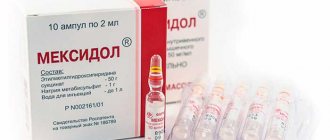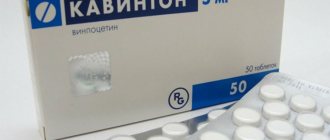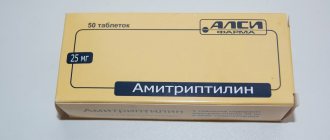INVEGA: SIDE EFFECTS
Determination of the frequency of side effects: very often (≥ 10%), often (≥1% and
From the psyche: often - agitation; infrequently - nightmares, sleep disturbances, anxiety.
From the senses: often - deterioration of visual acuity, oculogyric crisis.
Metabolism: often - increased appetite, increased body weight; infrequently - decreased appetite.
Dermatological reactions: uncommon - rash, papular rash, itching.
Infections: uncommon - nasopharyngitis, upper respiratory tract infections, rhinitis, urinary tract infections.
Allergic reactions: uncommon - anaphylactic reaction.
Laboratory indicators: increased serum prolactin levels.
Other: often - asthenic disorders, fatigue; infrequently - swelling.
Table 1. Adverse effects reported in ≥2% of patients with schizophrenia treated with Invega in clinical trials
Paliperidone is an active metabolite of risperidone, however, the release profile and pharmacokinetic characteristics of Invega differ significantly from the immediate-release oral dosage forms of risperidone. Adverse effects reported with risperidone may occur with paliperidone.
Most side effects were mild or moderate.
Side effects3 mg 1 time/day%6 mg 1 time/day%9 mg 1 time/day%12 mg 1 time/day%Placebo%Nervous system headache1112141412dizziness65454extrapyramidal symptoms52772drowsiness53753kathisia438104tremor33433increased muscle tone21431dystonia11441sedative effect 15364 parkinsonism 0210 Cardiovascular system sinus tachycardia 94 474 tachycardia 27 773 bundle branch block 3 132 AV block I degree 20 211 orthostatic hypotension 21 241 Co sides of the digestive systemdry mouth23131pain in the upper abdomen13221hypersalivation014General disordersasthenia2221fatigue21221
Pharmacological properties
Pharmacodynamics
Paliperidone, the active substance of Invega, is a centrally acting antagonist of dopamine D 2 receptors. It has high antagonism towards serotonin 5-HT 2A receptors. It also exhibits antagonism to α 1 - and α 2 -adrenergic receptors and H 1 -histamine receptors. The substance does not have affinity for muscarinic, cholinergic, β 1 - and β 2 -adrenergic receptors. The pharmacological activity of the (+) and (−) enantiomers of paliperidone is the same in quantitative and qualitative terms.
The antipsychotic effect of paliperidone is due to the blockade of D 2 -dopaminergic receptors of the mesocortical and mesolimbic systems. In comparison with classical antipsychotics (neuroleptics), it leads to less suppression of motor activity and induces catalepsy to a lesser extent.
Balanced central antagonism to dopamine and serotonin can reduce the tendency to develop extrapyramidal side effects and expand the therapeutic effect of Invega to cover productive and negative signs of schizophrenia.
Paliperidone affects sleep structure, reducing the number of awakenings after falling asleep and the latency period before falling asleep; increasing the total duration, time and sleep quality index.
May lead to an increase in plasma concentrations of prolactin. Has an antiemetic effect.
Pharmacokinetics
Pharmacokinetic data presented below are based on results from studies in adult patients (unless otherwise stated).
The pharmacokinetic characteristics of the substance after oral administration are dose-dependent in the recommended therapeutic range (once a day, 3–12 mg).
The plasma concentration of paliperidone after taking one dose increases steadily, C max (maximum concentration) is reached within 24 hours. Steady-state concentrations of paliperidone are achieved in most cases within 4–5 days.
Paliperidone is an active metabolite of risperidone. The peculiarities of the release of the active substance from Invega provide smaller fluctuations in the maximum and minimum concentrations of the substance than those observed when using conventional dosage forms (concentration fluctuation index - 38%, for conventional dosage forms - 125%).
After oral administration of paliperidone, mutual conversion of the (+) and (−) enantiomers occurs, the AUC (+)/AUC (–) ratio (area under the concentration-time curve) at steady state is about 1.6. Absolute bioavailability – 28% (ranges from 23 to 33% with a confidence interval of 90%).
After a single dose of 15 mg of paliperidone simultaneously with a high-calorie fatty meal, Cmax and AUC values increased relative to fasting by 42 and 46%, respectively. Another study found an increase of 60% and 54% (with 12 mg paliperidone). Thus, it has been established that the presence/absence of food in the stomach affects the plasma concentration of the substance.
Paliperidone is distributed quickly into body fluids and tissues. The apparent volume of distribution is 487 l. The substance binds to plasma proteins at a level of 74%. Binding occurs predominantly with albumin and α 1 -acid glycoprotein.
7 days after taking 1 mg of paliperidone, 59% of the dose of unchanged substance was excreted in the urine, indicating the absence of intensive metabolism of paliperidone in the liver. Approximately 80% of the drug is found in urine, and about 11% in feces.
Metabolism can occur in four ways - dealkylation, hydroxylation, dehydrogenation and cleavage of benzisoxazole. None of them cover more than 6.5% of the dose. Cytochrome P450 isoenzymes CYP2D6 and CYP3A4 play some role in the metabolism of paliperidone, but reliable evidence of their significant participation has not been obtained. The isoenzymes CYP2C9, CYP2A6, CYP1A2, CYP3A5 and CYP2C19 are not involved in the metabolism of paliperidone.
The final T1/2 (half-life) of paliperidone is ~ 23 hours.
Paliperidone is a P-glycoprotein substrate and, when used in high concentrations, weakly inhibits it. The clinical significance of this has not been established.
The use of Invega in severe liver dysfunction has not been studied.
It has been established that the elimination of the substance decreases as CC (creatinine clearance) decreases. Decrease in the total clearance of paliperidone and the value of the average final T1/2 depending on CC:
- 50–80 ml/min (mild renal impairment): 32%; 24 hours;
- 30–50 ml/min (moderate renal impairment): 64%; 40 hours;
- 10–30 ml/min (severe renal impairment): 71%; 51 hours
In patients with moderate/severe renal impairment, the dose of paliperidone should be reduced.
Drug interactions
Caution should be exercised when Invega is co-administered with drugs that prolong the QT interval. Effect of paliperidone on other drugs
Effect of paliperidone on other drugs
Paliperidone is not likely to enter into clinically significant pharmacokinetic interactions with drugs that are metabolized by isoenzymes of the cytochrome P450 system. In vitro studies using human liver microsomes showed that paliperidone does not significantly inhibit the biotransformation of drugs metabolized by cytochrome P450 isoenzymes, including CYP1A4, CYP2A6, CYP2C8/9/10, CYP2D6, CYP2E1, CYP3A4 and CYP3A5. Therefore, there is no reason to assume that paliperidone will inhibit to a clinically significant extent the clearance of drugs that are metabolized by these enzymes. In in vitro studies, paliperidone did not induce the activity of CYP1A2, CYP2C19 or CYP3A4 isoenzymes.
At high concentrations, paliperidone is a weak inhibitor of P-glycoprotein. No in vivo data available, clinical significance unknown.
Given the fact that paliperidone acts primarily on the central nervous system, it should be used with caution in combination with other centrally acting drugs and with ethanol. Paliperidone may counteract the effects of levodopa and other dopamine agonists
Paliperidone may counteract the effects of levodopa and other dopamine agonists.
Due to the ability of paliperidone to cause orthostatic hypotension, additive effects may occur when the drug is used concomitantly with other drugs that cause orthostatic hypotension.
The ability of other drugs to affect paliperidone
Paliperidone is not a substrate of the isoenzymes CYP1A2, CYP2A6, CYP2C9, CYP2C19 and CYP3A5. This indicates a low probability of its interaction with inhibitors or inducers of these enzymes. In vitro studies have revealed minimal involvement of the CYP2D6 and CYP3A4 isoenzymes in the metabolism of paliperidone, however, there is no evidence that these isoenzymes play a significant role in the metabolism of paliperidone in vitro or in vivo.
In vitro studies have shown that paliperidone is a substrate of P-glycoprotein.
Paliperidone is metabolized to a limited extent by the CYP2D6 isoenzyme. In a study in adult volunteers, the interaction of paliperidone with paroxetine, a potential inhibitor of CYP2D6, did not observe a clinically significant change in the pharmacokinetics of paliperidone.
When paliperidone was co-administered with carbamazepine (200 mg 2 times/day), a decrease in paliperidone Cmax and AUC of approximately 37% was observed. This decrease was caused by a 35% increase in paliperidone clearance as a result of carbamazepine induction of renal P-glycoprotein. The small decrease in the amount of drug excreted unchanged suggests that when coadministered, carbamazepine has only a minor effect on the CYP-mediated metabolism or bioavailability of paliperidone. When prescribing carbamazepine, an increase in the dose of paliperidone may be required. Conversely, when carbamazepine is discontinued, a reduction in the dose of paliperidone may be necessary.
Paliperidone, which is a cation at physiological pH values, is excreted predominantly unchanged by the kidneys; in this case, about half of the excretion is due to filtration and about half is due to active secretion. The use of paliperidone concomitantly with trimethoprim, which is known to inhibit the active renal transport of cationic drugs, did not affect the pharmacokinetics of paliperidone.
The concomitant use of paliperidone and risperidone has not been the subject of scientific research. Paliperidone is an active metabolite of risperidone, and therefore, concomitant use of paliperidone and risperidone may increase plasma concentrations of paliperidone.
Pharmacokinetics
Unless otherwise stated, pharmacokinetic data presented in this section are based on data obtained in adult patients. The pharmacokinetic characteristics of paliperidone after oral administration are proportional to the dose taken within the recommended therapeutic range (3-12 mg once daily).
Absorption
After taking one dose of the drug, the concentration of paliperidone in plasma steadily increased, and Cmax was reached after 24 hours. In most patients, equilibrium concentrations of paliperidone were achieved after 4-5 days of taking the drug once a day. Paliperidone is an active metabolite of risperidone. The release characteristics of the active substance from Invega® ensured smaller fluctuations in the maximum and minimum concentrations of paliperidone than those observed when using conventional dosage forms (concentration fluctuation index - 38% compared to 125% for conventional dosage forms).
After taking paliperidone tablets, the (+) and (−) enantiomers are interconverted, and the AUC ratio - AUC (+)/AUC (−) - at steady state is approximately 1.6. The absolute bioavailability of paliperidone after oral administration is 28% (23–33%, 90% confidence interval). Following a single dose of 15 mg paliperidone extended-release tablet with a high-fat, high-calorie meal, Cmax and AUC increased by an average of 42% and 46%, respectively, relative to the same values when taking the tablet on an empty stomach. In another study, following a single dose of 12 mg paliperidone extended-release tablet with a high-fat, high-calorie meal, Cmax and AUC increased by an average of 60% and 54%, respectively, relative to those when the tablet was administered on an empty stomach. Therefore, the presence or absence of food in the stomach while taking paliperidone may alter the plasma concentration of paliperidone.
Distribution
Paliperidone is rapidly distributed into tissues and body fluids. Apparent Vd - 487 l. The degree of binding to plasma proteins is 74%. Paliperidone binds predominantly to α1-acid glycoprotein and albumin.
Biotransformation and elimination
1 week after taking one standard tablet containing 1 mg of paliperidone, 59% of the dose was excreted unchanged in the urine; this indicates that paliperidone is not extensively metabolized in the liver. About 80% of the drug was found in urine and about 11% in feces. There are four known pathways for the metabolism of paliperidone in vivo.
, none of which covers more than 6.5% of the dose: dealkylation, hydroxylation, dehydrogenation and benzisoxazole cleavage.
In vitro
studies have shown that cytochrome P450 isoenzymes CYP2D6 and CYP3A4 may play a role in the metabolism of paliperidone, but evidence that they play a significant role in the metabolism of paliperidone
in vivo
has not been obtained.
Although CYP2D6 activity varies significantly in the general population, population pharmacokinetic studies have not revealed significant differences in the apparent clearance of paliperidone in patients with extensive metabolism of CYP2D6 substrates and in patients with poor metabolism of CYP2D6 substrates. In vitro
studies using microsomal preparations of heterologous systems have shown that the isoenzymes CYP1A2, CYP2A6, CYP2C9, CYP2C19 and CYP3A5 are not involved in the metabolism of paliperidone.
The final half-life of paliperidone is about 23 hours.
In vitro studies
showed that paliperidone is a substrate of P-glycoprotein and weakly inhibits it at high concentrations.
in vivo
data available, clinical significance unknown.
Special groups
Patients with impaired liver function.
Paliperidone is not extensively metabolized in the liver. In patients with mild to moderate hepatic impairment, there is no need to reduce the dose of paliperidone. A study in patients with moderate hepatic impairment (Child-Pugh class B) showed that these patients had plasma concentrations of unbound paliperidone similar to those in healthy subjects. The use of Invega® in patients with severe liver dysfunction has not been studied.
Patients with impaired renal function.
The dose of paliperidone should be reduced in patients with moderate to severe renal impairment. The excretion of paliperidone was studied in patients with varying degrees of renal impairment. It was found that the elimination of paliperidone decreased as creatinine clearance decreased. The total clearance of paliperidone was reduced by 32% in patients with mild renal impairment (creatinine clearance from 50 to <80 ml/min), by 64% in patients with moderate renal impairment (creatinine clearance from 30 to <50 ml/min) and by 71% in patients with severe renal impairment (Cl creatinine from 10 to <30 ml/min). The mean final T1/2 of paliperidone was 24, 40 and 51 hours in patients with mild, moderate and severe renal impairment, respectively; in people with normal kidney function (Cl creatinine >80 ml/min) this figure was 23 hours.
Teenagers.
Systemic exposure to paliperidone in adolescents was comparable to that in adults. The plasma concentration of paliperidone in adolescents weighing <51 kg is 23% higher than in adolescents weighing ≥51 kg, which is clinically insignificant. Age does not affect plasma concentrations of paliperidone.
Elderly patients.
It is not recommended to change the dose of paliperidone depending on the patient's age. The results of a pharmacokinetic study in elderly patients aged 65 years and older showed that the apparent clearance of paliperidone at steady state after taking Invega in this group was 20% lower than in adult patients aged 18-45 years. However, after adjusting for the age-related decrease in creatinine clearance, population analysis did not reveal the effect of the age of patients with schizophrenia on the pharmacokinetics of paliperidone.
Race.
No dose adjustments are required for patients of different races. Population pharmacokinetic analysis showed no racial differences in the pharmacokinetics of paliperidone when using Invega®. No differences in pharmacokinetics were found in studies of Japanese and Caucasians.
Floor.
Recommended doses of paliperidone are the same for men and women. The apparent clearance of paliperidone after taking the drug in women is approximately 19% lower than in men. This difference is primarily due to differences in lean body mass and creatinine clearance between men and women, as population-based studies, after adjusting for lean body mass and creatinine clearance, did not show clinically significant differences in the pharmacokinetics of paliperidone between men and women taking the drug. .
Smoking.
It is not recommended to change the dose of paliperidone in smokers.
In vitro
studies using human liver enzymes have shown that paliperidone is not a CYP1A2 substrate and therefore smoking should not affect the pharmacokinetics of paliperidone.
Consistent with the results of in vitro
, population studies have shown no differences in the pharmacokinetics of paliperidone between smokers and nonsmokers.
General information about the drug
Invega is a popular drug used to treat psychosis. It is produced by a pharmaceutical company (USA).
Drug group, INN, application
The drug belongs to a special drug group - antipsychotic drugs. They are also called antipsychotics. Such drugs affect the central nervous system.
The international nonproprietary name of a drug depends on the active substance that is included in its composition and determines its effect on the body. The INN of the drug Invega is Paliperidone. The scope of application of the drug is psychiatry. It is prescribed for the treatment of various psychotic disorders in adults and adolescents from 12 years of age.
Release form and cost
The drug is available in the form of extended-release tablets. They have a capsule-like shape. Their color and markings differ depending on the content of the active substance:
- 3 mg – white tablets marked PAL 3;
- 6 mg – yellowish color and the inscription PAL 6;
- 9 mg – pinkish and gray tint labeled PAL 9;
- 12 mg – yellow-brown color with the inscription PAL 12.
Advantages of the Invega drug molecule
All tablets are packaged in cell blisters of 7 pieces. A cardboard box contains 28 or 56 tablets. Invega is available with a prescription; its price depends on the content of the active ingredient in 1 tablet and their quantity in the package. Also, the cost may vary depending on where it was purchased. Examples of prices for medicine in different pharmacies in Russian cities:
| Dosage | Name of pharmacy and city | Cost in rubles |
| 9 mg (28 tablets) | Baltika-Med, St. Petersburg | 10 790 |
| 3 mg (28 pieces) | Dialog, Moscow and region | 6736 |
| 3 mg No. 28 | Dialog, Moscow and region | 6874 |
| 3 mg (28 pieces) | GORZDRAV, Moscow | 7082 |
| 9 mg No. 28 | GORZDRAV, Moscow | 9490 |
| 9 mg (28 tablets) | Violet, St. Petersburg | 9998 |
| 6 mg (28 pieces) | Vitamin, St. Petersburg | about 7590 |
This remedy is one of the vitally important drugs. It can only be purchased with a special prescription from the attending psychiatrist.
Components of Invega
The medicine contains the active substance paliperidone. One tablet may contain 3, 6, 9 or 12 mg. Povidone, macrogol, sodium chloride, hyethylose, stearic acid, wax, cellulose, and dyes (iron oxide) are used as auxiliary components.
Pharmacodynamics and pharmacokinetics
The pharmacodynamics of the drug depends on the action of its active component. Paliperidone is a selective blocker of the effects of monoamines. Its action differs from conventional antipsychotics. It selectively binds to the central receptors of dopamine and serotonin, which provides its antipsychotic effect; expanding the therapeutic effect can reduce the manifestation of negative symptoms of schizophrenia.
General information about the drug
In addition, there are fewer extrapyramidal side effects compared to other antipsychotics. Paliperidone is also an antagonist of histamine and alpha-adrenergic receptors.
Its positive effect on sleep is noted - an increase in its quality and duration, a decrease in the number of awakenings after falling asleep. It also has an antiemetic effect and can provoke an increase in prolactin levels in the blood.
Pharmakinetic features of paliperidone:
- absorption is gradual and dose-dependent;
- the highest concentration is observed one day after taking the medicine;
- bioavailability is relatively low - about 28%;
- quickly distributed in tissues and fluids;
- the substance is not actively metabolized in the liver;
- excreted along with urine and feces (more than 60% is excreted unchanged);
- The duration of the elimination period depends on creatinine clearance and, in the absence of kidney problems, is about 23 hours.
Age, race and gender do not affect the pharmacokinetics of the drug. It may be affected by kidney disease or by eating fatty foods.
Pharmacodynamics and pharmacokinetics
Pharmacodynamics
Antagonist of dopamine D2 receptors and serotonin 5-HT2. The antipsychotic effect is associated with blockade of D2-dopamine receptors. Compared to classical antipsychotics, it suppresses motor activity less and provokes catalepsy.
Eliminates negative and productive symptoms of schizophrenia, while causing almost no extrapyramidal adverse reactions. It affects sleep: it reduces the period before falling asleep, the number of awakenings, and increases the duration and quality of sleep. Causes an increase in prolactin levels in the blood. Has a moderate antiemetic effect.
Pharmacokinetics
When taking one dose, the concentration of the active substance in the blood increases and reaches a maximum after 24 hours. Equilibrium concentrations are achieved after 4–5 days of regular use. Paliperidone is an active metabolite of risperidone. Its release characteristics provide less variation in paliperidone concentrations.
It is quickly distributed in tissues, 74% binds to blood proteins. A week after taking one tablet, 59% is excreted in the urine. It is not metabolized in the liver and is therefore excreted unchanged. In vitro studies have shown that cytochrome P450 isoenzymes play a certain role in metabolism, but not a significant one. The half-life is 23 hours.
Since the active substance is not metabolized in the liver, there is no need to reduce the dose in patients with moderate liver dysfunction. However, the dose should be reduced in severe renal impairment. The pharmacokinetics of paliperidone in adolescents is comparable to that in adults.
Release form, composition and packaging
Extended-release tablets, white, capsule-shaped, coated, labeled “PAL 3”; outlets may or may not be visible by visual inspection.
| 1 tab. | |
| paliperidone | 3 mg |
Excipients: macrogol 200K, macrogol 7000K, sodium chloride, povidone (K29-32), hyethylose, stearic acid, butylated hydroxytoluene, red iron oxide, yellow iron oxide, macrogol 3350, cellulose acetate (398-10), white dye (hypromellose, titanium dioxide, lactose monohydrate, triacetin), carnauba wax.
7 pcs. - blisters (4) - cardboard packs. 7 pcs. - blisters (8) - cardboard packs. 30 pcs. — polyethylene bottles (1) — cardboard packs.
Extended-release tablets, light orange coated (a slight brownish tint is allowed), capsule-shaped, with the inscription “PAL 6”; outlets may or may not be visible by visual inspection.
| 1 tab. | |
| paliperidone | 6 mg |
Excipients: macrogol 200K, macrogol 7000K, sodium chloride, povidone (K29-32), hyethylose, stearic acid, butylated hydroxytoluene, red iron oxide, macrogol 3350, cellulose acetate (398-10), beige dye (hypromellose, titanium dioxide, polyethylene glycol 400, iron oxide yellow, iron oxide red), carnauba wax.
7 pcs. - blisters (4) - cardboard packs. 7 pcs. - blisters (8) - cardboard packs. 30 pcs. — polyethylene bottles (1) — cardboard packs.
Extended-release tablets, pink-colored (a grayish tint is allowed), capsule-shaped, with the inscription “PAL 9”; outlets may or may not be visible by visual inspection.
| 1 tab. | |
| paliperidone | 9 mg |
Excipients: macrogol 200K, macrogol 7000K, sodium chloride, povidone (K29-32), hyethylose, stearic acid, butylated hydroxytoluene, black iron oxide, red iron oxide, macrogol 3350, cellulose acetate (398-10), pink dye (hypromellose, titanium dioxide, polyethylene glycol 400, red iron oxide), carnauba wax.
7 pcs. - blisters (4) - cardboard packs. 7 pcs. - blisters (8) - cardboard packs. 30 pcs. — polyethylene bottles (1) — cardboard packs.
Extended-release tablets, dark yellow film-coated (a grayish tint is allowed), capsule-shaped, with the inscription “PAL 12”; outlets may or may not be visible by visual inspection.
| 1 tab. | |
| paliperidone | 12 mg |
Excipients: macrogol 200K, macrogol 7000K, sodium chloride, povidone (K29-32), hyethylose, stearic acid, butylated hydroxytoluene, red iron oxide, yellow iron oxide, macrogol 3350, cellulose acetate (398-10), dark yellow dye ( hypromellose, titanium dioxide, polyethylene glycol 400, iron oxide yellow), carnauba wax.
7 pcs. - blisters (4) - cardboard packs. 7 pcs. - blisters (8) - cardboard packs. 30 pcs. — polyethylene bottles (1) — cardboard packs.
The inscription on tablets of all dosages is made with water-soluble black ink (hypromellose, black iron oxide, purified water, isopropanol, propylene glycol).
Drug interactions and similar products
Since paliperidone is practically not metabolized in the liver, it does not take part in pharmacokinetic interactions with drugs that are metabolized by isoenzymes of the cytochrome P 450 system. The drug can reduce the therapeutic effect of levodopa and other dopamine agonists.
There are many drugs that have antipsychotic properties. The most popular analogues of Inveg:
- Haloperidol. This is a neuroleptic drug based on the substance haloperidone. It is prescribed as a sedative for psychomotor agitation due to psychosis in the manic stage, dementia, schizophrenia and alcoholism.
It is also used to treat psychoses with hallucinations, paranoid and delusional states, aggression, and behavioral disorders. It has many contraindications and side effects, so it is taken under medical supervision.
- Azaleptin. This is a medicine that contains clozapine. Has antipsychotic, sedative properties. It is prescribed for schizophrenia, manic and manic-depressive states, psychomotor agitation.
As a rule, it is taken in case of resistance to therapy with other antipsychotics. Contraindicated in patients with intolerance to components, suppression of hematopoiesis, alcoholic and toxic psychoses, epilepsy, disorders of the cardiac and respiratory systems.
- Sulpiride pilyule_nervi-369. This drug belongs to the classical antipsychotics from the group of substituted benzamides. It also has antidepressant properties. Has an antiemetic effect. The drug is prescribed for the short-term treatment of symptoms of anxiety when other remedies have not given the desired result.
It can also be used to treat anxiety and self-harm in children over 6 years of age, especially if they have autism syndrome. It has serious contraindications that should be taken into account before prescribing it.
Only the attending physician can prescribe a particular antipsychotic. Self-medication can lead to negative reactions and complications.
Interaction
Use caution when prescribing with drugs that prolong the QT interval. Paliperidone does not cause clinically significant interactions with drugs that are metabolized by the cytochrome P450 system. In vitro studies have shown that paliperidone does not cause inhibition or induction of isoenzymes of this cytochrome.
The drug should be used with caution in combination with other centrally acting drugs. Do not co-administer with drugs that cause orthostatic hypotension. Neutralizes the effect of levodopa. An interaction between this drug and lithium is unlikely.
Simultaneous administration with sodium valproate - the concentration of both drugs did not change. There was also no significant interaction with paroxetine. Use with risperidone has not been studied, but with carbamazepine it caused a decrease in the concentration of paliperidone in the blood by 37%, and therefore the dose of the latter needs to be adjusted. Use with trimethoprim did not affect the pharmacokinetic characteristics of paliperidone.
Side effects and symptoms of overdose
The drug is a potent drug, so its use may lead to the development of negative reactions. Among them:
- dizziness and headache;
- extrapyramidal anomalies;
- dystonia;
- general weakness, lethargy;
- sedation;
- dyskinesia;
- trembling of limbs;
- development of parkinsonism;
- visual impairment;
- cardiac disorders (tachycardia, arrhythmia, heart block);
- orthostatic hypotension;
- attacks of vomiting, decreased salivation, abdominal pain, intestinal obstruction;
- pancreatitis, jaundice;
- asthenic syndrome;
- weight gain;
- infections of the nose and throat (nasopharyngitis);
- mental disorders (fear, anxiety, excessive excitability);
- nosebleeds;
- decreased sexual activity, desire, amenorrhea in women and impotence in men;
- urinary incontinence or retention;
- allergic reactions on the skin (redness, itching, burning, urticaria, erythema);
- nasal congestion, cough, shortness of breath;
- pain in muscles and bones, back, muscle spasms;
- angioedema.
When taking high doses, increased side effects are observed. Main symptoms of overdose:
- drowsiness;
- sedation;
- increased heart rate;
- decrease in blood pressure.
Advantages of Invega
Treatment is carried out in a hospital setting. First, the patient's stomach is washed and laxatives and sorbents are given. There is no specific antidote for paliperidone. Therefore, symptomatic therapy is prescribed
At the same time, it is important to control the vital functions of the body
Instructions for use
The drug is intended for internal use. The tablets should be swallowed whole with liquid. They are not recommended to be chewed or crushed. The dosage regimen depends on the pathology and age of the patient:
- For adults, the drug is prescribed for schizophrenia and affective disorders. The recommended dose is 6 mg. It is taken once a day. Eating does not affect the activity of the drug. In some cases, a dose reduction or increase is required. The dosage should be increased gradually, by 3 mg every 5 days.
- Adolescents from the age of 12 are prescribed medication to treat schizophrenia. Their daily dose ranges from 3 to 12 mg. You should start with lower doses. Increasing the dose leads to increased therapeutic effect.
If older people do not have kidney problems, they do not need to reduce the dose
But it is important to be careful when treating patients with dementia and stroke risk
special instructions
It is important to be careful when taking the drug. His special instructions:
- When using the drug, there is a risk of neuroleptic malignant syndrome. Therefore, if its signs appear (rigidity, central nervous system depression, increased body temperature), the drug should be discontinued.
- It is not recommended to use the medicine for children under 12 years of age, elderly people over 65 years of age, pregnant women, and nursing mothers.
- If signs of dyskinesia appear, the drug should be discontinued.
- Taking the medication may lead to hyperglycemia. This should be taken into account when prescribing medication to patients with diabetes.
- The drug provokes an increase in prolactin levels, which leads to sexual dysfunction in men and women and suppression of reproductive function.
- Treatment with the drug provokes weight gain. Therefore, the patient's weight should be constantly monitored.
The drug Invega causes side effects that affect alertness and reaction speed. Therefore, while taking it, you should not drive a vehicle or operate machinery that requires increased concentration.
Description and instructions for the drug Invega
Invega is an antipsychotic drug. This medicine contains the active ingredient paliperidone. It is an antagonist of dopamine and serotonin (to a lesser extent) receptors. The mechanism of action of this medicine on the patient’s nervous system is extremely complex. But it can be argued that Invega induces movement disorders to a lesser extent, compared to many other antipsychotics. Treatment with this drug improves the quality of sleep: the patient falls asleep better, wakes up less often during the night, and feels more rested. It should be understood that this medicine, like other antipsychotic drugs, affects the body as a whole, affecting the health of all systems.
Invega is used for:
- Schizophrenia during periods of exacerbation;
- Prevention of schizophrenic exacerbations;
The release form of the drug Invega is tablets. They cannot be crushed or divided. Therefore, forms are produced with different dosages of the active substance. The instructions for the drug Invega indicate that it is taken once - that is, once a day. The average standard daily dosage is six milligrams. Often it does not need to be increased. For some patients, treatment with smaller amounts of the drug is sufficient. If you need to increase the dose, this should happen gradually. Every five days, the dose of Inveg is increased by three milligrams. Medication dosage adjustments may be required for patients whose kidney health is compromised. The doctor draws appropriate conclusions based on the creatinine clearance values.
Infega is contraindicated for:
- Paliperidone intolerance;
- Pregnancy and lactation;
Side effects and overdose of Inveg
The most obvious side effects of this drug are disorders of the nervous system - movement disorders (fussiness, restlessness, stereotypical movements, tremors, etc.), drowsiness, headaches, epileptic seizures, fainting, etc. Possible heart rhythm disturbances. Patients may gain weight, complain of drooling, enlarged mammary glands, and nipple discharge (associated with the effect of Inveg on the human hormonal system with an increase in prolactin levels). In general, the undesirable consequences of therapy using Inveg can be different - here it is important for the patient and his relatives to have contact with a doctor who can timely and competently assess and explain the situation.
In case of an overdose of this medicine, the described and other symptoms of its side effects appear with greater force. The patient needs emergency medical attention. He must be taken to a hospital, as it is necessary to monitor the activity of the vital systems of the body.
Instructions for Invega (Method and dosage)
The drug is taken orally in the morning, regardless of meals. The dosage of Inveg depends on the severity of the disease and the age of the patients.
For schizophrenia, adults are prescribed Invega 6 mg once a day. If an increase in dose is required, it is recommended to increase it by 3 mg every 5 days. In some patients, the effect occurs at lower or higher doses - in the range of 3-12 mg per day. Adolescents are recommended 3 mg per day. However, higher doses may be required, increasing them every 5 days.
For schizoaffective disorders, the recommended dose is 6 mg per day, in the morning. It is also possible to increase the dose to 12 mg per day, which is carried out gradually.
For moderate liver dysfunction, there is no need to reduce the dose. For severe cases, the dose is no more than 3 mg per day. In elderly patients, the dose depends on renal function. The safety of the drug in the treatment of schizophrenia in children under 12 years of age has not been studied. When transferring patients from paliperidone to other antipsychotics, you need to monitor the patient's condition.
Use during pregnancy and breastfeeding
taken orally, the tablets should be swallowed whole with liquid and should not be chewed, divided into pieces or crushed.
Schizophrenia
Adults (over 18 years old). The recommended dose in adults is 6 mg 1 time per day, in the morning, regardless of meals. A gradual increase in the initial dose is not required. In some patients, lower or higher doses within the recommended range of 3–12 mg once daily produce a therapeutic effect.
Teenagers (12–17 years old). The recommended dose in adolescents is 3 mg 1 time per day, in the morning, regardless of meals. A gradual increase in the initial dose is not required. In some patients, higher doses within the recommended range of 6–12 mg once daily produce a therapeutic effect.
Dose increases are possible only after clinical reassessment, with the dose increasing by 3 mg per day at intervals of more than 5 days.
Schizoaffective disorders
Adults (over 18 years old). The recommended dose in adults is 6 mg 1 time per day, in the morning. A gradual increase in the initial dose is not required. In some patients, lower or higher doses within the recommended range of 6–12 mg once daily produce a therapeutic effect. Increasing the dose, if necessary, should be carried out only after assessing the clinical condition of the patient.
Patients with impaired liver function. In patients with mild or moderate liver dysfunction, no dose reduction is required. The use of Invega in patients with severe liver dysfunction has not been studied.
Patients with impaired renal function. For patients with mild renal impairment (Cl creatinine ≥50, but {amp}lt;80 ml/min), the recommended initial dose is 3 mg 1 time per day. This dose may be increased to 6 mg once daily after assessing the patient's condition and taking into account drug tolerability.
For patients with moderate or severe renal impairment (creatinine Cl ≥10, but {amp}lt;50 ml/min), the recommended dose of the drug is 3 mg 1 time per day. The use of Invega® in patients with creatinine Cl <10 ml/min has not been studied, and therefore it is not recommended to prescribe the drug to these patients.
Elderly patients. For elderly patients with normal renal function (Cl creatinine ≥80 ml/min), the same doses of the drug are recommended as for adult patients with normal renal function. However, in elderly patients, renal function may be reduced, in which case the dose of the drug should be adjusted according to the renal function of the individual patient.
Children and teenagers. The effectiveness and safety of Invega for the treatment of schizophrenia in children under 12 years of age has not been studied. The effectiveness and safety of Invega for the treatment of schizoaffective disorders in patients under 18 years of age has not been studied.
Special patient groups
It is not recommended to change the dose of paliperidone depending on gender, age and whether the patient smokes or not.
Transferring patients to treatment with other antipsychotic drugs
There are currently no systematically collected data on the transition of patients from treatment with paliperidone to treatment with other antipsychotic drugs.
The pharmacodynamics and pharmacokinetics of different antipsychotic drugs are not the same, and therefore physicians should carefully monitor the condition of patients when transferring them from one antipsychotic drug to another.
Invega should be taken orally, never chewing or crushing the tablets. Do not forget that the product has a prolonged effect. Before you start using Invega, you should carefully read the instructions for use. For schizophrenia. The therapeutic dose for patients over sixteen years of age is 6 milligrams per day, regardless of food.
For adolescents, the optimal dose is 3 mg. per day (one-time). For schizoaffective disorders. Dosage for adults is usually 6 mg tablet. once daily. Your doctor may prescribe a lower or higher dose for use. If an increase in the amount of the substance is necessary, it is recommended to increase the dose by no more than 3 mg. (one tablet) per day, with breaks of more than five days.
To date, there is no information about the dangers of using the active substance paliperidone during pregnancy. However, the remedy is used only in cases of extreme necessity. During research, it was found that the use of antipsychotic drugs during the third trimester of pregnancy can cause pathological changes in infants in the quality and quantity of spontaneous movements carried out by skeletal muscles.
Muscle tone disturbances may occur and withdrawal syndrome may develop. If it is necessary to discontinue drug therapy, the dose should be reduced gradually. During breastfeeding, the use of Invega is prohibited, since the drug is excreted in breast milk and is found there in large quantities.
Features of application
When treating patients with liver pathologies, a reduction in the dosage of the drug is not required. When using Invega in patients with pathologies of the kidneys, a reduction in the dose of the drug is required. During the research, it was found that adolescents and adults can take the drug in the same amount.
With a reduced threshold for convulsive activity, the use of Invega should be justified and carried out with great caution. In case of swallowing reflex disorders, as well as decreased gastrointestinal tract patency, the use of the medicine should be limited, since the tablets cannot be chewed or crushed. In elderly patients with acquired dementia, the use of paliperidone is not advisable, since it may increase the risk of cerebrovascular pathologies. Caution should be used in patients with parkinsonism and diffuse Lewy body disease, as they may exhibit hypersensitivity.
There is also a risk of neuroleptic malignant syndrome
In elderly patients with acquired dementia, the use of paliperidone is not advisable, since it may increase the risk of cerebrovascular pathologies. Caution should be used in patients with parkinsonism and diffuse Lewy body disease, as they may exhibit hypersensitivity. There is also a risk of neuroleptic malignant syndrome








